The Best Microphone for Recording Vocals
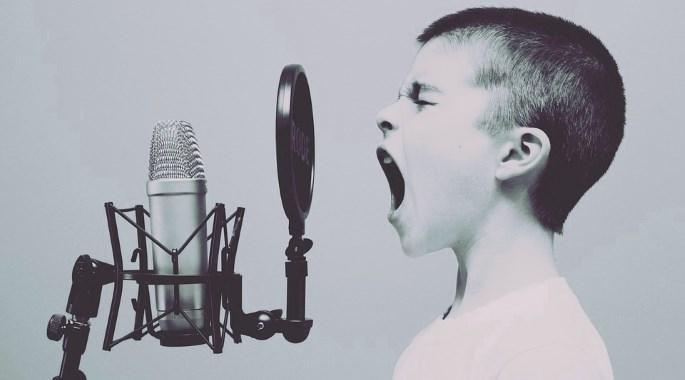
Best Microphone for Recording Vocals Under $200
We found three condenser microphones for recording vocals in the $100 - $200 price range that are worthy of our recommendation.
Audio-Technica AT2035
Cons
- Comes with limited accessories - only a Shock Mount and a basic pouch
Pros
- Clarity and detail comparable to more expensive mics
- Solid feel and metal exterior
- Also works great with various instruments, including violins and acoustic guitars
If you're searching for a quality mic for recording singing, then the Audio-Technica AT2035 is worth considering. Despite its budget-friendly price, it boasts premium features and exceptional build quality.
The AT2035 is a large diaphragm condenser microphone. It is particularly popular with project studios, voice-over artists, and streamers. Its custom shock mount and sturdy metal exterior add to its durability and professional feel.
This mic is a great value option for those starting out in recording. It has exceptional clarity and detailed capture, comparable to more expensive recording studio mics.
As expected from cardioid microphones, it has a high maximum SPL of 148dB and switchable low-frequency roll-off. This makes it a versatile studio mic option for recording vocals and other sound sources.
While it may not come with many accessories, including an XLR cable or a pop filter, its inclusion of a shock mount and a pouch is still a good bonus. Ideally, it's great to see budget microphones come with high-quality accessories to help get you started right away.
Overall, the Audio-Technica AT2035 is a reliable and versatile microphone. It delivers exceptional vocal recording. And it is also suitable for various instruments, including violins and acoustic guitars.
It's one of the best recording microphones for vocal frequencies in its price range. It is an excellent first investment for those looking to get serious about recording.
Specifications
- Type: Condenser
- Polar Pattern: Cardioid
- Frequency Response: 20 to 20,000 Hz
- Impedance: 120 ohms
- Maximum SPL: 148 dB
- Power Requirements: 11V to 52V DC, 3.8 mA typical
| Website | Source | *Rating Value |
| Audiofanzine | JimboSpins | 80/100 |
| Sound On Sound | Paul White | 92/100 |
sE Electronics X1 S Vocal Pack - Best Bundled Recording Mic for Studio
Cons
- Quite heavy - sturdy mic stand recommended
Pros
- Musical sound signature - good balance of harmonic richness and transparency
- High maximum SPL - great for loud sources
- Feature-rich for the pricepoint - 2 volume pads and 2 low cut filter settings
The sE Electronics X1 S Vocal pack includes a shockmount and a pop filter. The X1 S mic itself has a custom, handcrafted capsule made in-house by sE Electronics.
The custom transformerless circuit allows up to 160dB Maximum SPL thanks to its -10 and -20dB pads. Having a high maximum SPL lets you use this mic for louder sound sources like aggressive vocals as well as instruments.
A switchable low cut filter offers two cutoffs at 80hz and 160hz. This makes the mic ideal for use with loud sound sources.
The sound the sE Electronics X1 S captures is quite musical with just the right amount of harmonics. It strikes a balance between harmonic richness and transparency. The price-to-performance ratio as well as the build quality is also excellent.
One thing to note, the mic is a bit heavy; best to pair it with a solid Mic Stand.
Whether you're getting it as a first mic or as a studio recording microphone, the X1 S Vocal Pack is a great all-rounder for your studio. It's one of the best value studio mics offered in a package.
Specifications
- Type: Condenser
- Polar Pattern: Cardioid
- Frequency Response: 20 to 20,000 Hz
- Impedance: 125 ohms
- Maximum SPL: 160dB SPL (with pads)
- Power Requirements:48V phantom power
| Website | Source | *Rating Value |
| Victor Bailey | Victor Bailey | 90/100 |
| YouTube | bigtb1717 | 92/100 |
AKG P420
Cons
- Slight noise when using less-than-stellar preamps
Pros
- Versatile enough for both vocals and instruments
- High Maximum SPL
- Suitable for a wide variety of recording situations
The AKG P420 stands out for its dual-element design, allowing seamless switching between cardioid, omni, and figure-8 polar patterns. This versatility makes it ideal for recording solo artists, group singers, interviews, and various instruments. Its high SPL handling further extends its usability with powerful sound waves from loud sound sources like percussion.
Encased in a sturdy metal enclosure for added durability, this microphone has gained popularity among home studios and podcasters. Reviewers have lauded its adaptability for multiple applications, making it suitable for beginners seeking a versatile "desert island" or an all-purpose "beater" mic due to its varied polar patterns.
The AKG P420 performs exceptionally well across different scenarios, excelling in vocals, acoustic instruments, drums, and more. Despite a modest published figure for signal-to-noise ratio, it effectively maintains low self-noise. However, there might be a slight increase in noise when used with high-gain preamps.
Specifications
- Type: Condenser
- Polar Pattern: Cardioid, Omni, Figure-8
- Frequency Response: 20Hz-20kHz
- Impedance: 200 ohms
- Maximum SPL: 1135dB (155dB w/Pad)
- Power Requirements:+48V phantom power
Best Microphone for Recording Vocals Under $500
This price range is where manufacturers can really drive the quality up while balancing cost, resulting in high-quality mics that are still reasonably priced, as reflected by their high ratings. Even professionals find some of the mics in this bracket to be of great quality. Some of the best studio vocal mic choices fall under this price range.
Lewitt LCT 440 Pure
Cons
- Cardioid only
- Can get sibilant
Pros
- Great neutral midrange with a silky smooth high end usually only heard on ultra-expensive microphones
- High-quality bundled accessories
- Low self-noise makes it great for recording quiet sources and room tone
- Excellent for pop vocals, acoustic instruments, or anything where detail and brightness are desired
The demand for a more affordable, project studio-oriented product from Lewitt saw the release of the LCT 440 Pure. A distillation of their design philosophy into only the most essential pieces. The 440 Pure is a cardioid polar pattern only LDC with no other features. On paper, this might not sound like much to offer, but the mic comes in an attractive package with a shockmount and 2 pop filters (foam and metal mesh).

The "stem" of the microphone houses the XLR output jack. This is the part that slides into the proprietary shockmount and friction-locked into place.
If you're looking for the best recording microphone for your studio, the Lewitt LCT 440 Pure is an excellent option. It's a recording mic for studio use that delivers high-end sound at an affordable price. Because of the streamlined approach to the mic, price is kept low while the capsule, enclosure, and circuitry remain top standard. The LCT 440 Pure employs the same capsule as their flagship microphones but distilled into a simple, single-pattern mic. The result is surprisingly versatile, especially with a max SPL handling of 140dB SPL for 0.5% THD, it won't need a pad at all for some cases.
It's a neutral midrange mic with a sweet, airy high end. A sound that you can only get from classics like the Telefunken ELA M 251e and the Sony C800g. Some examples of the 251e have slightly more harmonically rich low mids vs the c800g.
The Lewitt LCT440 Pure shares the same "pop vocal" sheen that the aforementioned mics offer. But it lacks the subtle harmonic content that gives a feeling of "compression" on specific frequency ranges.
It is a great choice if you're looking for a more affordable studio recording mic that fits well within the sound signature of high-end mics.
It's worth noting that some people find the mic too sibilant; a trait it shares with the two expensive mics mentioned earlier. If you're after Neumann smoothness, you may want to look elsewhere as the LCT440 Pure has a modern and airy sound designed to cut through in a modern pop mix. Lewitt's higher-end models introduce multiple patterns and pads, so those may be worth checking out if you need those features.
Overall, the Lewitt LCT440 Pure definitely delivers that big studio sound without the big studio price. Get it if you're looking for an excellent pop vocal mic or a bright condenser mic to capture nuanced acoustic guitar performances.
| Website | Source | *Rating Value |
| Recording Magazine | Paul Vnuk Jr. | 98/100 |
| Gearank | Raphael Pulgar | 96/100 |
Shure SM7B
Cons
- Requires a lot of gain to drive properly
Pros
- Works great for both clean vocals and screams
- Supreme versatility - practically a do-all microphone
- Also works especially well for distorted electric guitars
- High build quality
The Shure SM7B is a dynamic mic originally designed for radio broadcast. Among its famous users include Michael Jackson, who preferred using the original SM7 on his vocal takes for Thriller. Modern musicians and producers have found that the SM7B sounds great on aggressive, screamed vocals. It is also great for distorted electric guitar.
While featuring a similar capsule to their famed Shure SM57/58, the SM7's designers were given the freedom to alter it during the design process. Their end goals were a deeper low frequency response, an internal shockmount, and an enclosure tuned to accentuate more low end.
It is the result of decades of iterations, which includes the SM7A in 1999. It introduced a hum-canceling coil and a different yoke mount. The SM7B was introduced in 2001 featuring a new windscreen.
Because it was tuned as a broadcast microphone, voice recordings made with the SM7B sound sublime. They barely need any additional processing to sound good in a mix. And this will change your recording and mixing experience in a big way. The mic performs well with both clean vocals and screams. And in addition to vocals, the SM7B performs well with distorted electric guitar.
One caveat though, the mic does require an audio interface or mic preamp that can provide at least 60dB of gain, otherwise, the mic can be too quiet. I own a Cloud Microphones CL-1 which I use for this purpose.
With decades of legacy behind it, the SM7B lives up to its legend as a "do-all" microphone that performs excellently on voices and instruments. It is one of the best studio mics in the market. Just make sure you have enough gain on tap to ensure you get the full performance out of this legendary mic.
Specifications
- Type: Dynamic
- Polar Pattern: Cardioid
- Frequency Response: 50 to 20,000 Hz
- Impedance: 150 ohms
- Maximum SPL: 150++ dB
- Bass roll-off control
- Mid-range emphasis / Presence boost control
- Power Requirements: None
| Website | Source | *Rating Value |
| Home Brew Audio | Ken Theriot | 90/100 |
| Audiofanzine | Anonymous | 100/100 |
Lauten Audio LA-320
Cons
- Low pass filter slightly aggressive
- External PSU and tube circuitry not ideal for live use
Pros
- Adds a lot of character to recordings
- Excellent on acoustic guitar
- Makes female voices sound silky smooth
The LA-320, a Tube Condenser microphone, distinguishes itself with a host of practical features, including high and low pass filter switches, accompanied by a custom power supply and shock mount, neatly organized within a durable carrying case. Users frequently commend its smooth high end, enhanced by a subtle tube saturation effect, offering a clear sound across the frequency spectrum. It has a remarkably flat frequency response which is great for acoustic instruments like the cello, reacting delicately to nuances.
While the mic's wide frequency response caters well to various instruments and voices, some users find the high pass filter to be a touch aggressive. Additionally, there have been observations of slight mic shifting due to the shock mount during performances. While the LA-320 offers exceptional performance, some users might consider a tube upgrade for optimal results, although it remains an optional consideration for improvement.
Overall, it requires minimal processing for vocal tracks in diverse music genres, making it a compelling mid-priced option and a potential starting point for expanding one's microphone collection.
Specifications
- Type:Tube Condenser
- Polar Pattern: Cardioid
- Frequency Response: 20Hz - 20kHz
- Impedance: 200 Ohms
- Maximum SPL: 130dB SPL
- Power Requirements: Custom power supply (Switchable 100v to 240v compatible range)
| Website | Source | *Rating Value |
| Gearspace | BMGLoftStudios | 90/100 |
| Sound On Sound | Paul White | 93/100 |
| Tape Op | Ben Bernstein | 90/100 |
Frequency Response and Polar Pattern Charts
Author's Pick
Rode NT1
Cons
- Heavy shockmount (metal variant)
- Cardioid only
Pros
- Vintage sound signature reminiscent of classic German microphones
- Low self-noise
- Great build quality and durability
- Comes with accessories
I am a huge fan of vintage mics. I've been spoiled because I've been in studios with great vintage tube mics and worked with tracks sent to me that were recorded with them. Mixing tracks made with them has always been a good experience especially when they match the singer. One of my favorite experiences was mixing a singer recorded with a great sounding vintage Neumann/Telefunken (it wasn't specified then) U47. My journey to find something similar to the U47 direction brought me to the Rode NT1.
Rode promotes the NT1 as having a warm, vintage sound by comparing it with a U47 that was formerly owned by the band INXS.
My first impression of the mic was great. Depending on the package you get, some stores offer the Rycote Lyre-style shockmount with a paddle-like metal pop filter, while others carry a more traditional metal shockmount with elastic bands plus a fabric pop filter. Regardless of the paired accessories, the mic is the same. I had the one with the metal shockmount which was built solidly.
Moving onto the mic itself, the finish feels great to the touch. It has a high quality matte black finish with the logo, serial number, and other details laser etched on the body. The edge terminated capsule is visible through the headbasket. The one on mine came slightly misaligned but it was only a matter of unscrewing the endcap and realigning the capsule and closing it. Not really a problem for me but it might be for some that are particular with how their products come out of the box.
Plugging it in and turning +48v on, I got to do a preliminary mic test with the peaks hitting around -10dbfs. I have to say that I was initially underwhelmed. But this is only because I've grown so accustomed to modern-sounding mics like the Aston Origin and Lewit LCT 440 pure that moving to a vintage tuned mic made me aware of my instinct for instant gratification.
Consider the NT1's sound as more of a blank canvas rather than an already finished painting and things will suddenly fall into place. One feature to support this is the NT1's extremely low self-noise. This enables the use of heavy tone shaping without bringing up the mic's inherent noise floor (not counting
room noise of course). Record in a well-treated room and you will be rewarded with a recording that can take a lot of processing and still sound good.
In essence, the sound reminds me more of the successor to the Neumann U47, the U67. The U67 has less of the midrange harmonics of its predecessor (which honestly can get very cluttered with louder singers) with a slight bump at the high frequencies to help in intelligibilty. Like the U67, the Rode NT1 has a natural sounding low frequency range in contrast to the U47's more prominent bass, especially with proximity effect in play.
On other aspects, handling noise was actually very minimal. The capsule is internally shockmounted with a Rycote cradle. I use the NT1 for streaming and voiceovers and moving the mic around while I do so doesn't result in overbearing thumps and thuds.

The heavy-duty metal shockmount and integrated pop filter are included in this version of the kit.
With all this praise, I have to note that I have a few caveats with the kit. The shockmount is solidly built but very heavy. The fabric mesh pop filter is built into the shockmount and it adds to the weight. Unless you're using a straight mic stand, you will need a heavy duty boom mic arm to carry the weight of the mic kit. Rode offers a direct mounting solution in the form of the Rode RM2 ring mount. This is my preferred setup when using the NT1 for voice overs.
The Rode NT1 is a great mic for vintage tones without the vintage price. While the lack of any other pad and polar pattern options limit its versatility, its tonality is enough for it to be useful for a wide array of voices and instruments.
Specifications
- Type: Dynamic
- Polar Pattern: Cardioid
- Frequency Response: 40 to 15,000 Hz
- Impedance: 150 ohms (300 ohms actual)
- Max SPL: 160 dB at 1kHz
- Applications: Live and recorded guitars, guitar amps, vocals, drums & more
| Website | Source | *Rating Value |
| Sound on Sound | Paul White | 90/100 |
| MusicRadar | Trevor Curwen | 90/100 |
| Gearank | Raphael Pulgar | 95/100 |
Best Microphone for Recording Vocals Under $1000
This price range is where the budget boundaries of home recording and professional studios overlap, resulting in premium quality mics that are ready for professional use, while still somewhat reasonable enough for home recording studios to invest in.
Warm Audio WA87 R2
Cons
- Mic might be too heavy for light mic stands
- Needs slightly more gain which may introduce preamp noise.
Pros
- Fantastic, vintage-style mic
- Comparable to mics several times the price
- Rich and realistic capture
Warm Audio's latest revision of their WA-87 microphone, the WA-87 R2, pushes to bridge the gap even closer to the classic Neumann U 87 while adopting a sleeker, modernized appearance. The alteration in design might attract or deter enthusiasts, but its performance claims to lean closer to the beloved Neumann sound.
Sporting a modified aesthetic, the WA-87 R2's changes seek to enhance its performance and refine its sound profile akin to the renowned Neumann model. Its sleek, new appearance raises questions about its appeal, particularly among vintage purists.
This microphone arrives in a chic wooden storage case, offering protection and maintaining its appearance when not in use. Clad in a nickel finish (also available in black), it comes with both a shockmount and hardmount, while an optional flight case is available. The R2 preserves the familiar traits of the U 87, offering three polar patterns, an 80Hz high-pass filter, and a -10dB pad. Its reproduction of the original dual-backplate K87 capsule assures an authentic heritage, supported by improvements in the CineMag output transformer and upgraded internal components for an improved frequency response.
The WA-87 R2, while substantially less expensive than its vintage and modern Neumann counterparts, boasts exceptional quality. Featuring a classic design and quality build, it competes favorably in terms of build and sound quality. However, its lower overall gain compared to some other condenser microphones and the need for a sturdy stand due to its weight could be seen as drawbacks. Nonetheless, its ability to deliver warmth and detail similar to the U87, across a range of studio applications, positions it as a compelling choice for both home and professional studios.
Specifications
- Type: FET Condenser
- Polar Pattern: Cardioid, Omnidirectional, Figure-8
- Frequency Response: 20Hz-20kHz
- Impedance: 150 Ohm
- Maximum SPL: 125dB SPL
- Power Requirements:48V phantom power
| Website | Source | *Rating Value |
| MusicTech | John Pickford | 90/100 |
| Recording Mag | Alex Hawley | 90/100 |
Neumann TLM 102 - Best Studio Microphone for Vocals
Cons
- Not cheap although it is the cheapest large-diaphragm Neumann condenser
- No extra features or switches - just a simple cardioid condenser
Pros
- Premium and clear tonality specifically designed for vocals
- Solid build quality and design
- Compact size
The Neumann TLM102 is a top contender for the best vocal recording mic and the best mics for capturing vocals in a studio setting.
For Neumann's brand of quality build and sound, this mic is more accessible. It has a lower price point due to its streamlined design and smaller profile.
It has a large-diaphragm condenser capsule and transformerless capacitor. These are typically seen on more expensive models, making it an excellent value.
Designed with a slight emphasis on the midrange, the Neumann TLM 102 is perfect for vocal recording. It is easily one of the best microphones for recording vocals.
It comes with a single cardioid pattern, limiting its versatility but also making it easy to use. This mic is suitable for a range of settings from home setups to professionals with big recording studios. Its solid build and sonic clarity are both impressive, making it the best studio vocal mic for those seeking high-end microphones.
Despite its streamlined design, the Neumann TLM 102 exceeds expectations. It offers excellent sound quality that outperforms cheaper models with more features. This mic strikes a balance between great specifications and build quality that is uncommon at its price point.
Overall, the Neumann TLM 102 is an excellent choice for those looking to have the best mic studio for recording vocals. It is a great first foray into higher-end tonalities.
Specifications
- Type: Condenser
- Polar Pattern: Cardioid
- Frequency Response: 20 to 20,000 Hz
- Impedance: 50 ohms
- Maximum SPL: 144 dB
- Power Requirements: 48V phantom power
| Website | Source | *Rating Value |
| Audiofanzine | chrislieck | 80/100 |
| RecordingHacks | Paul Stamler | 94/100 |
Austrian Audio OC18 Studio Set
Cons
- Included shockmount could be better for the price
Pros
- Top quality microphone sound with natural capture of sources
- Versatile and neutral tonality with great clarity
- Comes with accessories
- Great value relative to vintage and boutique mics costing several times more
Emerging from AKG's heritage, Austrian Audio introduces the OC series with the OC818 and OC18 condenser microphones. Their price points are surprisingly competitive, blending tradition and innovation. Austrian Audio's origin story, stemming from AKG's Vienna site closure, marries the agility of a startup with the seasoned expertise of an established name, forming a company dedicated to microphone production, notably with the OC series.
The heart of these microphones lies in the CKR12 capsule, a nod to the legendary CK12. The OC series incorporates this newly designed capsule, carrying forward the essence of classic AKG microphones. While the OC18 stands as a fixed cardioid model, the OC818 provides a wealth of options, allowing for multiple polar patterns and enabling custom presets via the PolarDesigner plug-in. This pioneering feature redefines post-recording mic adjustments.
The OC818 offers an expansive tonal range and clarity, matched consistently, while the OC18 presents a slightly brighter tonality. Though Austrian Audio suggests both OC18 and OC818 are sonically identical in cardioid mode, the slight tonal differences could be noticeable.
A notable point is the flimsy shockmount design, where the microphones, especially the OC818, pose a limitation in mounting positions due to its construction.
The OC series delivers exceptional performance, offering a compelling choice for various recording applications, making them an affordable yet powerful option for studios seeking to elevate their recording capabilities.
Specifications
- Type: Condenser
- Polar Pattern: Cardioid
- Frequency Response: 20Hz-20kHz
- Impedance: 275 ohms
- Maximum SPL: 148dB SPL
- Power Requirements:48V phantom power
| Website | Source | *Rating Value |
| MusicTech | John Pickford | 90/100 |
| ProTools Expert | Editor | 98/100 |
Things to Consider When Buying a Microphone for Recording Vocals
-
Condenser mics continue to be staple equipment for recording vocals. Home studio setups benefit greatly from their sensitivity and versatility. But don't brush off dynamic mics just yet because even pros opt to use them for certain scenarios. While the boundaries can be blurred from time to time, the general idea is that condenser mics capture more sonic details. This is done is at the expense of having limited sound pressure handling. On the flip side, a dynamic microphone can handle louder sources and have better background noise rejection. The safest and most versatile of the two would be the condenser. But if you're into recording loud sound sources, or full band performances, then getting a dynamic one is the better choice. Note that condenser mics usually +48v or their own power supply to work, while dynamic mics usually don't need any kind of mic preamp or power supply. If budget permits, it is recommended to get one of each so you have a go-to mic for virtually any type of vocal recording.
-
Polar patterns describe how a mic captures sound; to be more specific, the location and direction of the sound relative to the mic's position. Cardioid, with its front capture and rear rejection is the most commonly used for vocal recording. Other mic patterns like the ones found in Figure 8 mics and Omnidirectional microphones allow more of the ambient sound to be captured, and can also be used for recording a singing group or multiple sound sources. For further information on Polar Patterns see the article The Different Types Of Mics And Their Uses.
-
This specification indicates how strongly a mic responds to various frequencies. It is usually shown in the form of a chart to show the specific frequencies that are emphasized and de-emphasized. Compared to live vocal microphones, studio recording microphones tend to have a wider frequency range since there is no danger of feedback. The resulting sound should ideally be as neutral and flat as possible. However there are who prefer subtle coloration like additional warmth and low-end. Singers with a low pitched voice will appreciate those with strong frequencies below 200Hz, since they can reproduce the tone of their voice better. On the other hand, you'll want one that can tame some of the highs if your voice tends to be naturally high-pitched. The more familiar you are with the voice that you're recording, the more useful the frequency charts will be to you. This is the reason why professional studios have multiple mics to accommodate various human voice types. A good rule of thumb is to start with a flat EQ and make adjustments as necessary before switching mics.
-
Pop filters are essentially "wind screens" that stop excessive air movement while allowing sound to pass through. Sudden air movements from strong "p" pronunciations (AKA plosives) can cause unwanted volume jumps or worse cause signal clipping, which is unwanted in a recording setting. Many mics come with bundled pop filters - but some have expressed concerns about the quality of some of these free filters. More expensive condenser mics have pop-filters built into the casing itself for convenient pop and noise protection.
-
This indicates the maximum volume, measured in decibels (dB), that you can expose a mic to before it starts to distort the signal. This is not a primary concern for vocal recording, but if you want an all-around mic that you can use for louder instruments like drums and amplifiers, then you'll want to look for those with a high Max SPL. Many of the mics mentioned in this guide feature switchable attenuation pad(s), which allows them to handle louder sound sources without distorting the sound. In line with this, an SPL meter is a good tool to have, even for home studios. You can either download an SPL meter app for your smartphone or buy a hardware SPL Meter for more accurate measurements.
-
Most audio interfaces, mic preamps and studio mixing desks today provide phantom power, but in case you have an old one that doesn't you'll need a separate mic preamp or a channel strip that can supply power to condenser mics. Note that there are some condenser mics that can't run on phantom power, rather they have dedicated power supply to feed them with the power they need, which is usually the case for tube driven mics. Dynamic mics don't usually require any power so no need to worry about an external preamp if you're going that route.
Note that many hobbyists and pros are satisfied with USB microphones for basic vocal recordings. Having a good condenser USB microphone is often more than enough for capturing single sound sources, and they are easier to connect to a computer based setup. You can add another USB mic as your recording needs expand.
-
While the main focus of this guide is for recording vocals, many of the best microphones for recording vocals that are listed here also work well with other instruments. Dynamic mics with their high max SPL will usually work well with loud instruments like drums and speaker cabinets. While condenser mics record vocals and acoustic instruments (including drum overheads) just as well.
An idea is to consider other instruments that you will also record and get mics that will also work with them to get more out of the money you're paying. You also have to consider the mic's ability to adapt to your recording environment, like when Recording in Stereo. It's also good to have a handheld mic that can double as a studio mic.
Having a Soundproof Studio is also a plus, so you won't have to worry about extraneous noise ruining your recordings.
Diaphragm Type: Condenser vs Dynamic Microphones
Polar Pattern
Frequency Response
Pop Filter
Max SPL (Sound Pressure Level) and Attenuation Pads
Power Source - Phantom Power
Mic Versatility
Best Studio Mic for Vocals Selection Methodology
The first edition was published in 2016. The current edition was published on Nov 7, 2023.
Our goal is to feature the best studio microphones that can be readily bought from online American music equipment retailers. As such our initial short list featured 74 popular and top rated mics that are currently being sold in the USA from brands including AKG, Aston Microphones, Audio-Technica, Audix, Austrian Audio, Avantone Pro, Behringer, Earthworks Audio, Electro-Voice, Golden Age Project, Heil Sound, Lauten Audio, , Lewitt Audio, Mackie, Miktek, Mojave Audio, Neumann, PreSonus, Rode, sE Electronics, Sennheiser, Shure, Slate Digital, Studio Projects, TZ Audio Products, United Studio Technologies, Warm Audio.
We then compiled all relevant ratings, reviews, forum discussions and expert recommendations, which for this update tallied to over 89,000 rating sources. All of these were then processed via the Gearank Algorithm, which gave us the rating scores out of 100 that we used to select the top rated for three specific price ranges: sub $200, sub $500, and sub $1000. For more information about our methods see How Gearank Works.
About the Author and Contributors
Here are the key people and sources involved in this guide's production - click on linked names for information about their music industry backgrounds.
Lead Author & Researcher
Raphael Pulgar
I've been an audio engineer for 20 years specializing in rock and metal recordings. I also play guitar and produce original music for my band and other content creators.
Some of the recording gear I use in my studio includes the Focusrite Scarlett 18i20, Focusrite Scarlett Solo, Samson QH4 Headphone Amp and Cloudlifter CL-1. My mics include Aston Origin, Aston Element, Shure SM57, Rode NT1, Rode PodMic and MXL V67G.
Contributors
Alexander Briones: Editing.
Alden Acosta: Supplemental writing.
Jason Horton: Editing and Illustrating.
Media
Main/Top Image: based on a stock photograph in the public domain.
The individual product images, frequency response charts and polar pattern charts were sourced from their respective manufacturers' websites, promotional materials or supporting documentation except for the additional LCT 440 Pure and Rode NT1 photos which was taken by the author.



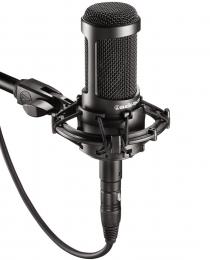

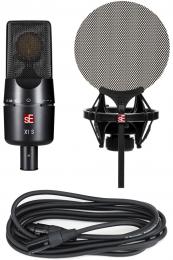


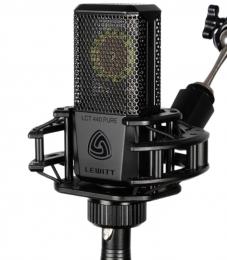

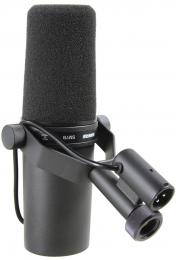


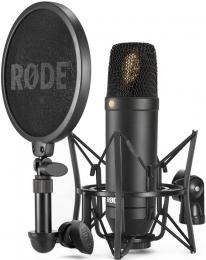
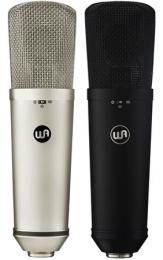
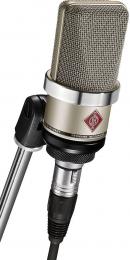

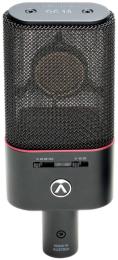
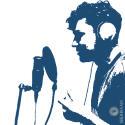
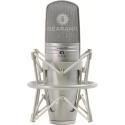
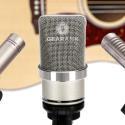
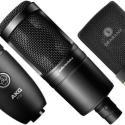
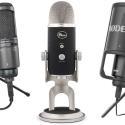
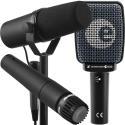
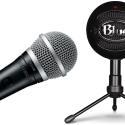
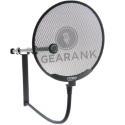
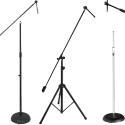
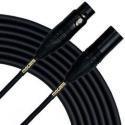
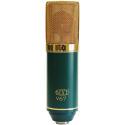
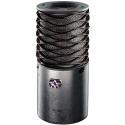
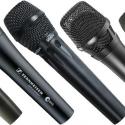
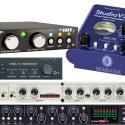
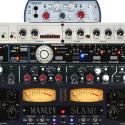
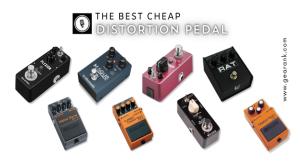
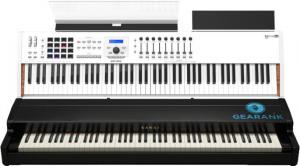
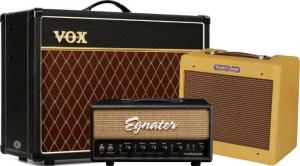
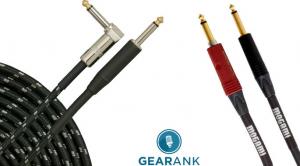
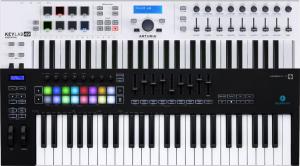
Comments
The following mics came off
Submitted by Jason Horton on
The following mics came off our recommended list above when we published the July 2022 Edition:
Publication of our April 2021
Submitted by Jason Horton on
Publication of our April 2021 edition resulted in the following mics coming off the recommended list above, but you can still see our analysis of them:
As a result of our February
Submitted by Jason Horton on
As a result of our February 2020 update the following mic came off the recommended list above, but you can still read our analysis of it: Heil Sound PR 40.
As a result of the October
Submitted by Jason Horton on
As a result of the October 2018 update to this guide the following mics were removed from our recommended list above but you can still find our analysis here:
As a side note, the following mics made it back onto the recommended list above:
So the Akg p220 condenser mic
Submitted by Prince (not verified) on
So the Akg p220 condenser mic can work well in accompanied with what type of mixer and interface?
The November 2017 update of
Submitted by Jason Horton on
The November 2017 update of this guide resulted in several microphones being removed from our recommended list above, however you can still read about them here:
I'm looking for a Mic plus pa
Submitted by Edwin Holt (not verified) on
I'm looking for a Mic plus pa system that will give me a quality sound over a screaming audience without me having to scream into the Mic, and or make adjustments in the middle of a song. While at the sametime picking up the sound from an acoustic guitar. I'm not trying to ruin my vocal cords while singing any type of song. I'm open to suggestions.
the best way learn to sing
Submitted by cherokee 156 (not verified) on
the best way learn to sing properly, really. Unless you specifically go there for the quietness (like billie eilish, etc. do nowadays) you should be able to sing loud enough to be louder than any normal crowd, if your singing technique is correct. In fact, singing quietly is a sign of a person not using their lungs and head properly. Singing louder is not about vocal chords at all, but about the resonance of your body, the vocal chords actually play a minor part in the loudness of the sound. If you feel like singing louder makes your vocal chords soar, please, find a vocal couch. It is really dangerous to sing in a vocal-chords-heavy way, even if you sing just a bit louder than just quiet.
If you want me to recomed a mic however, i would go for the shure sm58 for vocals, and a guitar with a pickup. I cannot recommend any more versatile mic, while not knowing how your voice sounds. About the PA, if you are on the budget, i would just recommend any small mixer, and like an RCA, or any half-way decent monitor.
But seriously, make sure your breathing technique is correct, and that you do not overuse your vocal chords. It might me dangerous, and might affect your voice in the future.
i hope this helps... ale the best!
If you're singing and playing
Submitted by Alexander Briones on
While you can mic an acoustic guitar on stage, it requires more effort to setup. It is also harder to stop noise from bleeding into acoustic guitar mics. This is why miking acoustic guitars are mostly done in recording studios, or intimate/small venue performances.
If you're singing and playing guitar at the same time over a noisy crowd, then you're best option is to have a good acoustic electric guitar that can be plugged in straight to PA, and have a dedicated stage mic for vocals. You can click the links to see our recommendations, based on market response.
Since you mentioned you're looking for a PA system, you can check out our Portable PA System recommendations.